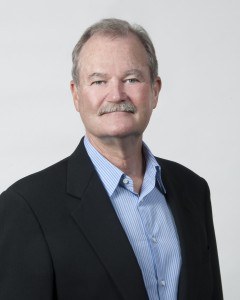If you’re going to successfully operate a relatively new reinsurance company in these troubled times, you better know what you’re doing. Fortunately, Bermuda-based Hamilton Re would seem to pass muster.
First, it’s not a startup. Hamilton Re is the successor company to SAC Re Ltd., the reinsurer established by SAC Capital hedge fund baron Stephen Cohen, which was acquired by tech firm Two Sigma and Brian Duperreault in December 2013.
Second, you would hard pressed to find anybody in the industry with more knowledge and a better track record than Duperreault. Starting as an actuary with AIG, he subsequently led ACE, building it into a large and profitable company. He then revamped Marsh & McLennan, assuring that it maintains its place as the world’s biggest broker.

One of the real virtues of the annual Reinsurance Rendez-Vous de Septembre in Monte Carlo is being able to meet and talk with people like Duperreault, now chairman and CEO of Hamilton Insurance Group and Hamilton Re CEO Kathleen Reardon, as the companies approach their first anniversary under the Hamilton banner.
Duperreault made it clear that the Hamilton Group operates as a separate organization from Hamilton Re, which is Reardon’s responsibility, although they are linked. “I think the mission and culture will go all the way up to the limited company, Hamilton Insurance Group,” Reardon said. “But it’s really having a successful leadership, experienced management [and] teaming that up with our Two Sigma’s technology in asset management that’s unique,” she said to explain how the reinsurer differs from other companies.
“In this marketplace, we need to differentiate ourselves, and I think that combination will give us a really good start,” she continued, explaining that the combination of classical reinsurance underwriting with Two Sigma’s technology expertise would certainly result in “a lot of enhancements we can make to the traditional reinsurance underwriting capabilities.”
The group has chosen Hamilton USA, headquartered in Princeton, N.J., to initiate its business plan. It is an “insurance platform,” Reardon said, which “will lend itself to analytics. We’ll be allowed to do a lot of big data crunching on the insurance platform. On the reinsurance side, we will benefit as well. But we’re still a new company, and we’re still growing and maturing, so it will take some time.”
In achieving that growth Hamilton Re will initially play to its strength and will concentrate on “lines that lend themselves well to data analytics,” Reardon said. “It would normally be frequency over severity, because you have more data, tighter around the mean, a little bit easier to analyze,” Duperreault added.
“It doesn’t necessarily limit us to that,” he continued. “Technology isn’t just decision-making around the risk. It’s how you move that risk through the system, front to back. Technology also means having a very efficient processing structure.
Turning to the more general topic of the reinsurance industry, Reardon said: “It’s been a benign loss year. I don’t envision a hard market being created at the 1/1 renewal season. I expect the soft conditions to continue. But, as far as the reinsurance industry being on negative outlook, we’ve been there before a few years back.
“The industry stepped forward and proved itself, and I think that’s what will happen now. All the rating agencies have cited ways to step up and outperform during this negative outlook—geographic distribution, implementing your strategy successfully. We have the right team to implement our business strategy. We’re going to differentiate ourselves from others. We have a different proposition to offer people.”
Addressing the increase in alternative capital in reinsurance, Duperreault said: “You have external forces coming in to look at the business, saying, ‘This should be logically looked at in a more in-depth way.’ I think it’s probably a combination of the two subjects we talked about earlier, this question of analytics, data.”
Asked about Aon’s conclusion that about 20 percent of capital in the reinsurance market is now, more or less, from alternative capital sources, Reardon explained that the industry has “always had alternative options—cat bonds, in general—but now they’re thinking about it more seriously.” Although Hamilton Re doesn’t currently have any alternative capital product offerings, “it’s something we can look at in the future,” she said. “But if I look at what the clients are asking for, they’re asking for alternative options, traditional options.
“Both alternative and traditional can operate together and provide the optimal solution to the client. I think that will work well. Ultimately, Hamilton Re is well positioned to go to lean on either side. So, it will be interesting.”
Although some Rendez-Vous participants speculated that a major catastrophe might trigger a rate rise, the general consensus, mostly based on the major catastrophes that occurred in 2011, was that if such an event occurred, its effects would be limited to certain lines.
Asked about that possibility, Reardon said: “I think the same market conditions exist now. For example, aviation has had an increased frequency of events this year, so we’re expecting some hardening within that class of business. Last year, [we had] the same thing with the Canadian and European floods. There were some rates maintained or hardened in those regions. After 9/11, that happened, which was interesting; it helped the terrorism market take off. It created demand and people with solutions. That could be an interesting outcome, after the next catastrophe.”
“I think the industry never hardens, particularly now, because it’s so geographically spread,” Duperreault added. “When the U.S. was the dominant player, even there, when we had the hard market in the ’80s, it was a casualty hardening. The property sector didn’t really harden.
“9/11 was interesting because it touched almost every line. I’ve never seen anything like it. It was first party, third party. It was aviation; it was terrorism. It was everything all rolled into one. But markets are always isolated hardening. It [a catastrophic event] could be in a country or it could be a line of business, but it never happens across the whole board. It just doesn’t, probably never will.”
Reardon also confirmed that Hamilton Re is “exploring emerging markets.” However, “we take a tempered approach. It’s just that much more due diligence, that much more visiting the clients, getting to know the clients and really supporting who has the right management, the right culture that fits well with our company.
“You can’t ignore China. They will be a big force to reckon with in the future, so tread carefully. Realize the shortcomings. Perhaps the data quality might not be where the Western world is, for example. Know the deficiencies, measure them and support who you think is the leader in that community.”
In order to analyze the data you want to use, you need to make sure it’s reliable, and that requires a working knowledge of how that data is produced. “I think you need to really visit the countries, know the culture,” Reardon said. “Premiums are generally published figures and relatively reliable. It’s the aggregates that you might struggle to get.
“It’s really doing a little bit of benchmarking, comparing one Peruvian company to another, their attachment level, the nonexposure on the books. Does it make sense? Are their average premiums different? Maybe a bit more of a comparison exercise.”
As the head of a major insurer and then a major broker, Duperreault can speak on both sides. “Certainly, the brokerage industry loves to create markets for its business. It helps its clients that way.” He added that not only did you have to be understanding of the trends, but you also had to “help promote those trends and work with these new markets to see if they could provide the kind of capabilities that the existing markets were doing. It’s something that the brokers have to keep their eye on.”
“The changes in the way business is done, it’s much more sophisticated. The broker has to increase their level of sophistication to match the sophistication of the buyer and the seller. You’re in between the two. I think the modeling, all of these things that have occurred, have…changed the [broking] profession to some degree.
“It can’t just be an interpersonal relationship that wins the day. You have to have that, but you better know a lot about what you do. You have to become very professional in analytics, in your knowledge of new capital sources. It raises the level again.”
Duperreault thinks that reinsurance brokers are doing a good job overall, but he also pointed out that “there’s been a narrowing, a reduction in the numbers because of that requirement that I just described. You get fewer larger players because you need to have the capabilities within the company to deliver the product.” Larger brokers are in a comparatively better position to invest in the people and technology to meet those needs.
“I’d say the broker’s doing a nice job offering the clients a bouquet of options,” Reardon said. “Is it alternative? Is it traditional? They’re thinking outside the box. Then they’re supplementing that a lot more now, perhaps, if there’s a vendor model that’s not available for a particular region of peril. They’re doing a lot of supplementing of those models. They’re offering the clients a much better package. It seems like they’re doing a good job.”
She also indicated that—with the exception of the prices [too low]—writing reinsurance coverage is being done well between brokers and reinsurers.
“The brokers are always going to push for the best, for the most, for the least, and that’s their job,” Duperreault said. “They should do that job, and they’re pretty good at it. We have to do ours.”





















 Don’t Forget Workers Comp Tariff Impacts: Berkley
Don’t Forget Workers Comp Tariff Impacts: Berkley  Bill Aims to Make Staged Accidents a Federal Crime
Bill Aims to Make Staged Accidents a Federal Crime  1 in 6 Americans Report Feeling Stressed Every Day
1 in 6 Americans Report Feeling Stressed Every Day  Insurers Need End-to-End Strategy to See Double the ROI in AI Implementation
Insurers Need End-to-End Strategy to See Double the ROI in AI Implementation 








